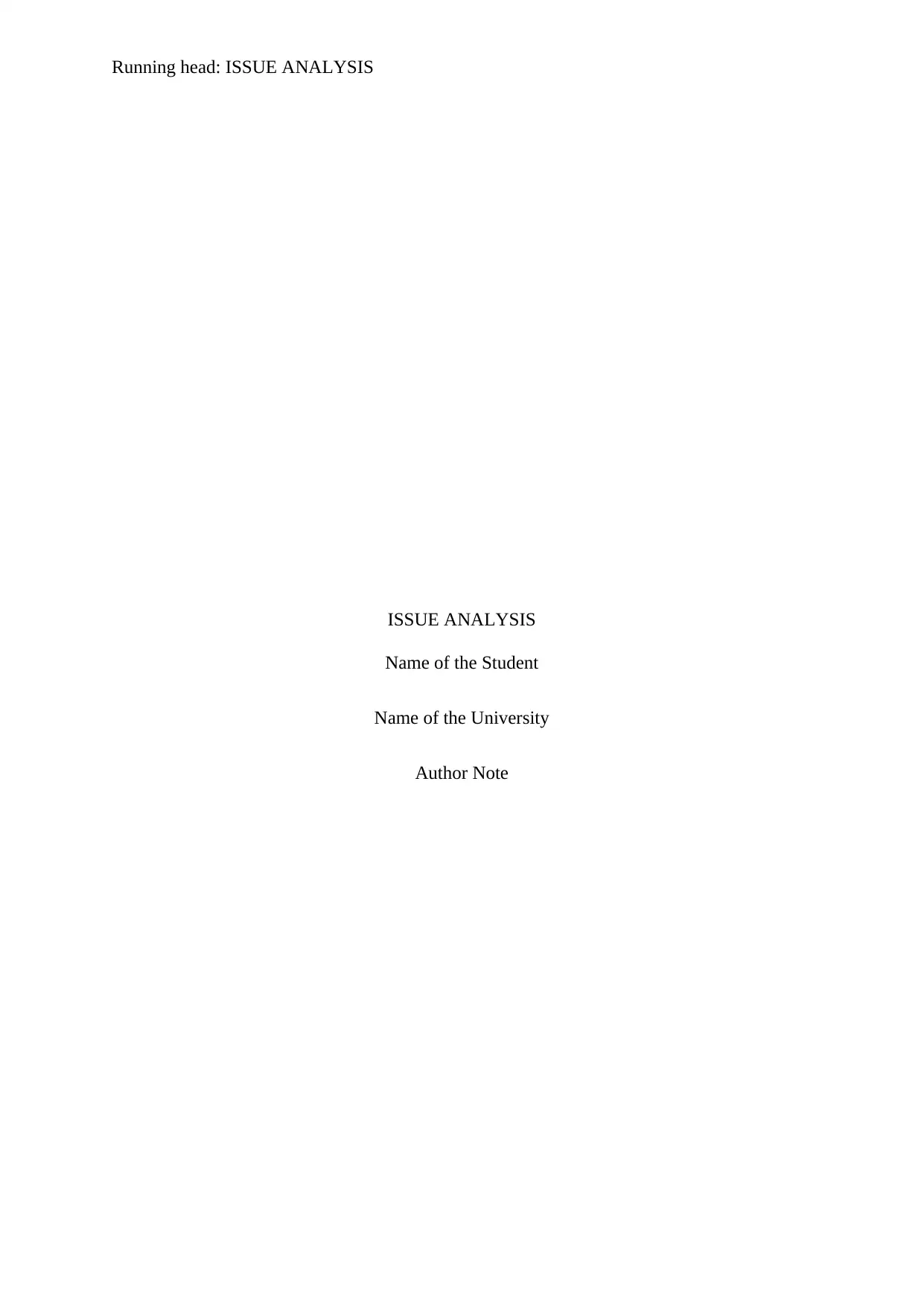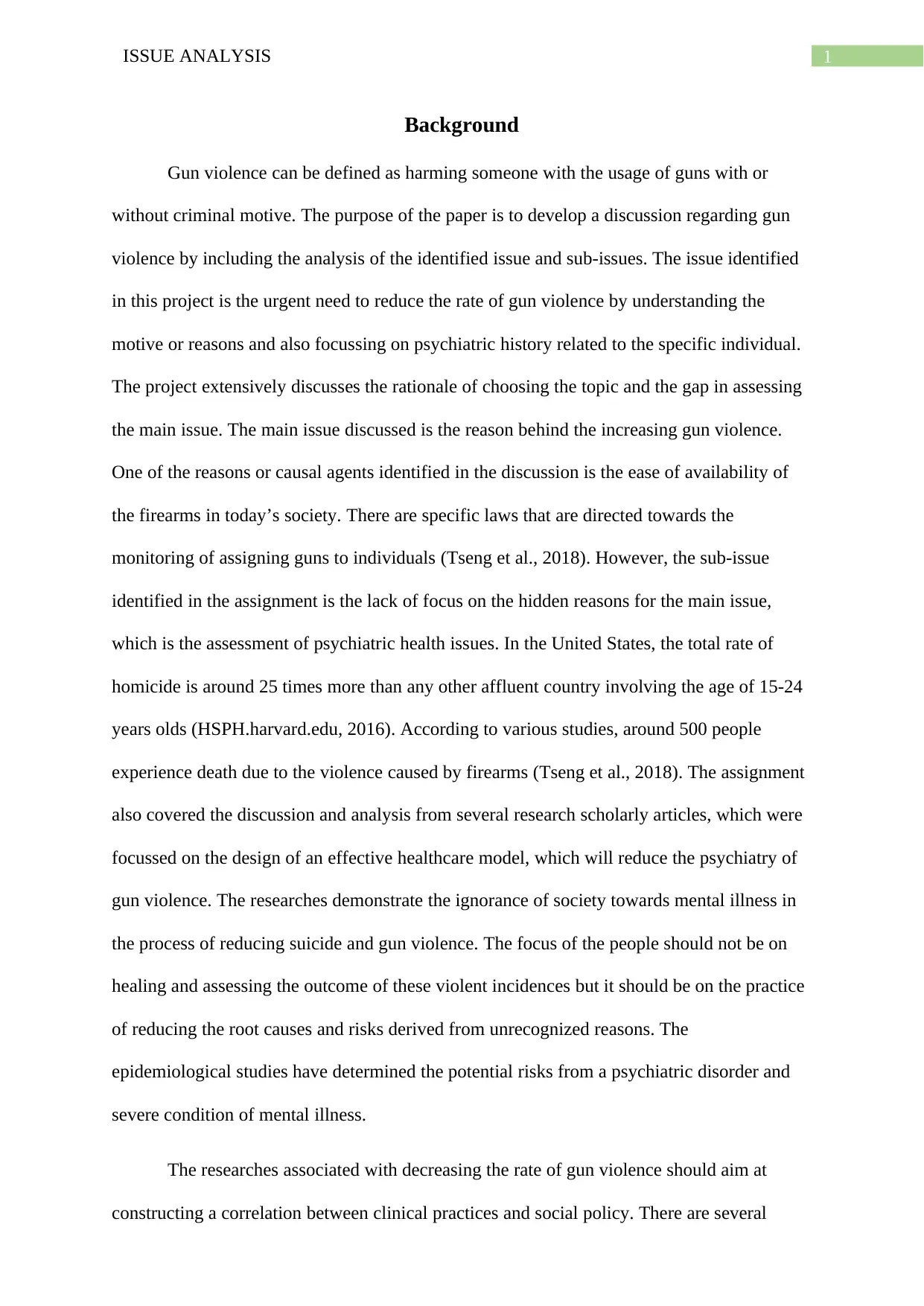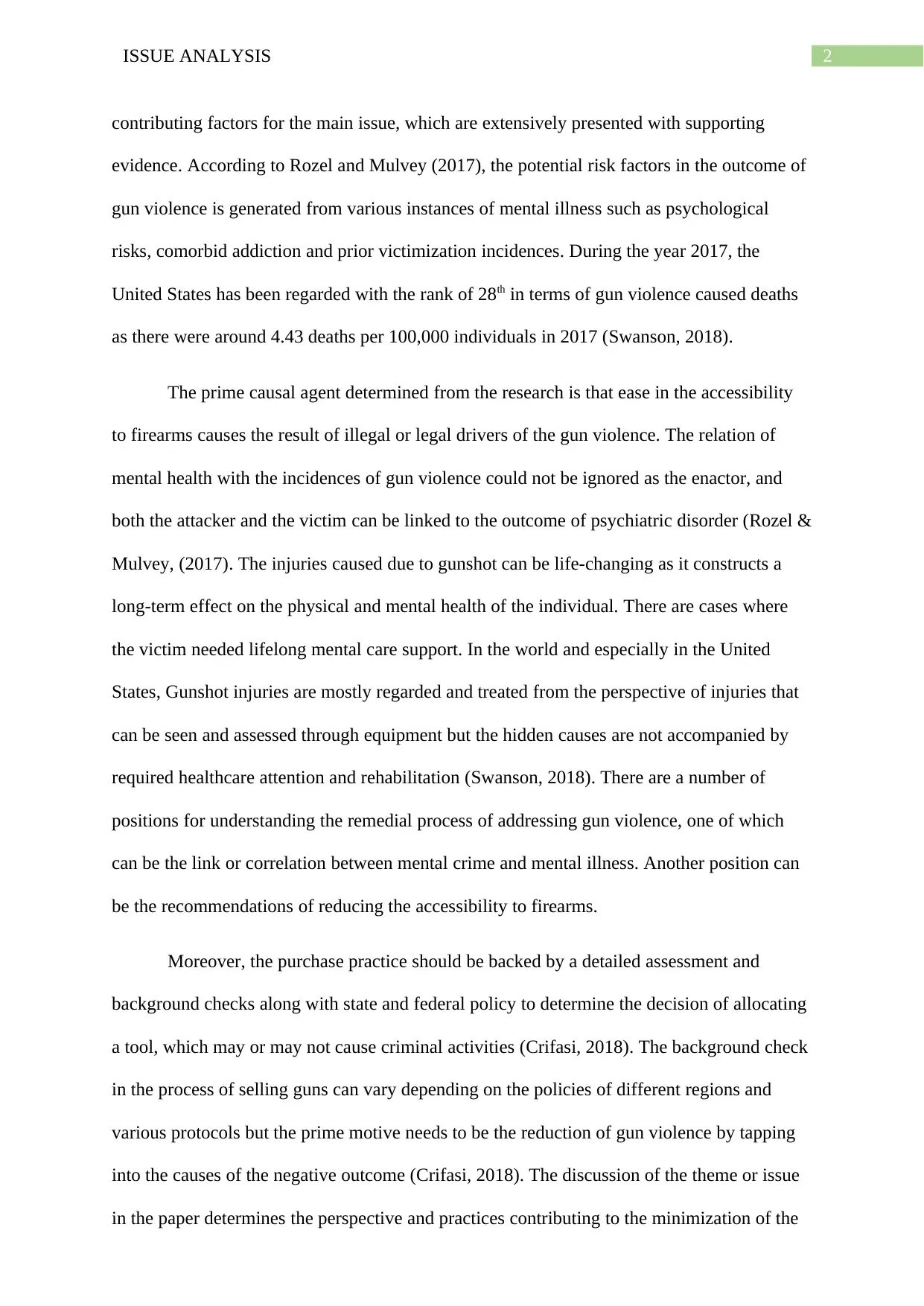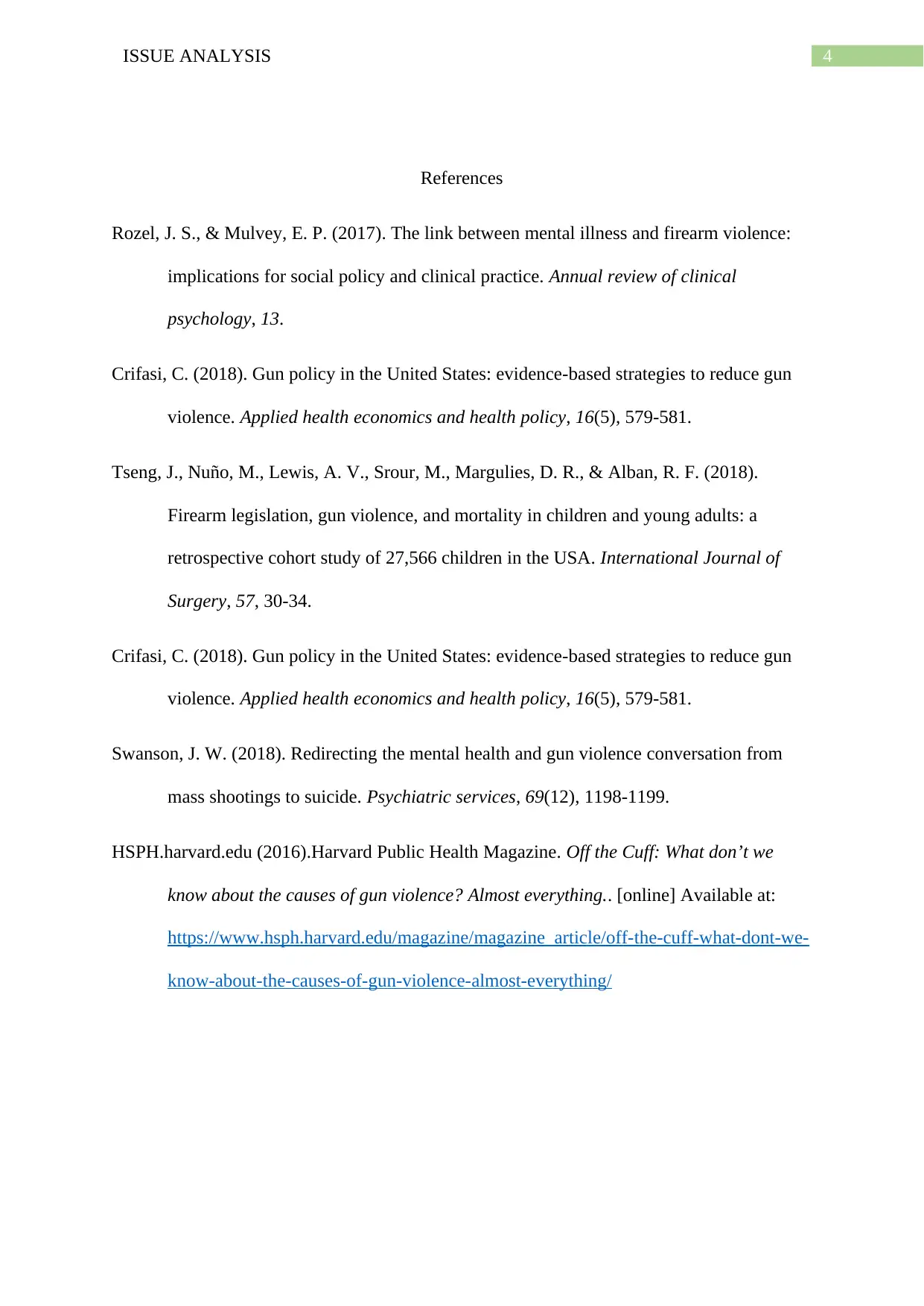Gun Violence Analysis: Causes, Psychiatric Factors, and Solutions
VerifiedAdded on 2022/08/14
|5
|1098
|17
Report
AI Summary
This report analyzes the issue of gun violence, emphasizing the need to reduce its prevalence by addressing both the ease of firearm availability and the often-overlooked role of mental health. It highlights that the current focus on background checks for firearm purchases should be expanded to include thorough psychiatric evaluations, as mental health issues are frequently linked to gun violence. The report discusses various contributing factors to gun violence, including psychological risks, comorbid addiction, and prior victimization, while also referencing epidemiological studies that identify potential risks from psychiatric disorders. The report references several scholarly articles and research that discuss the need to reduce gun violence by addressing the root causes and the necessity of integrating clinical practices with social policy. It stresses the importance of considering the victim's mental health as well as the perpetrator's mental state. The paper concludes by suggesting that reducing the accessibility to firearms and implementing more comprehensive background checks, including psychiatric evaluations, are essential steps in minimizing gun violence.
1 out of 5












![[object Object]](/_next/static/media/star-bottom.7253800d.svg)